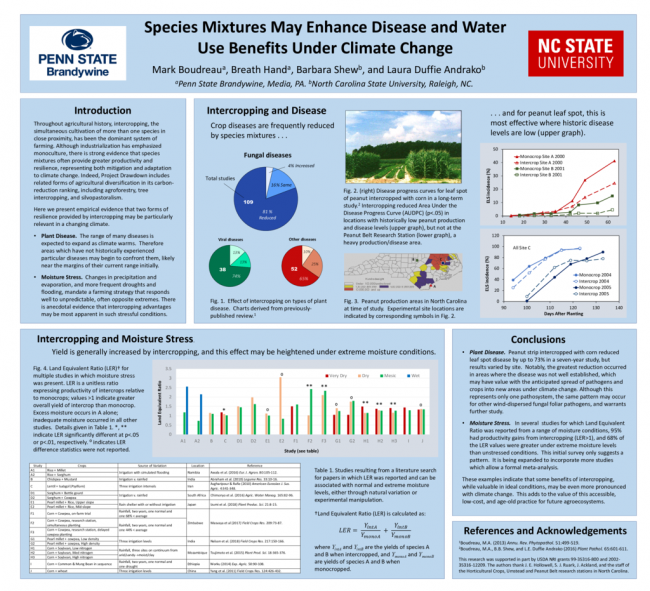Throughout agricultural history, intercropping has been the dominant system of cultivation. Although industrialization has emphasized monoculture, there is strong evidence that species mixtures often provide greater productivity and resilience, representing both mitigation and adaptation to climate change. Indeed, Project Drawdown includes three forms of agricultural diversification in its carbon-reduction rankings. Two specific examples of intercropping advantage, disease and water use, may be more pronounced under climate stress in some cases. In the first example, peanut strip intercropped with maize or cotton reduced leaf spot disease by up to 73% in a seven-year study, but varied widely by site and season. Notably, the greatest reduction occurred in areas where the disease was not well established, which may have value with the anticipated spread of pathogens and crops into new areas with climate change. Furthermore, reduction appeared to be due to disruption of spore dispersal, a mechanism likely to be relatively robust in future climates. Although this represents one pathosystem, the same pattern may occur for other wind-dispersed fungal foliar pathogens. In the second example, we reviewed studies in which Land Equivalence Ratio (LER, a measure of intercrop yield advantage) was reported from a range of moisture conditions. Not only do systems generally show productivity gains from intercropping (LER>1), but LER values are typically greater under extreme moisture levels, a condition more likely under climate change. These two examples illustrate that intercropping may be a more effective climate adaptation tool for disease and water management than previously realized.
Day
Tuesday Poster Session
Related Conference Themes
Food
Land Use


